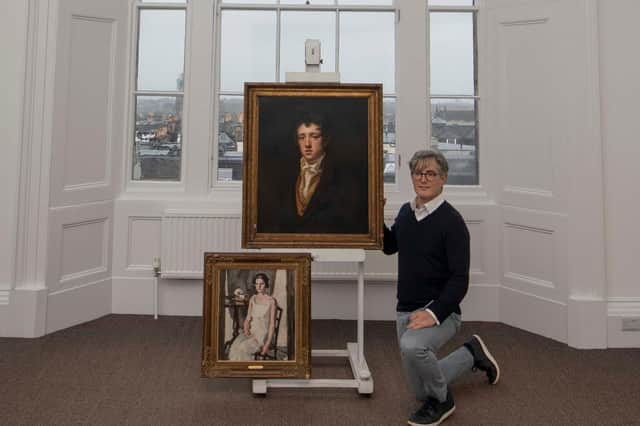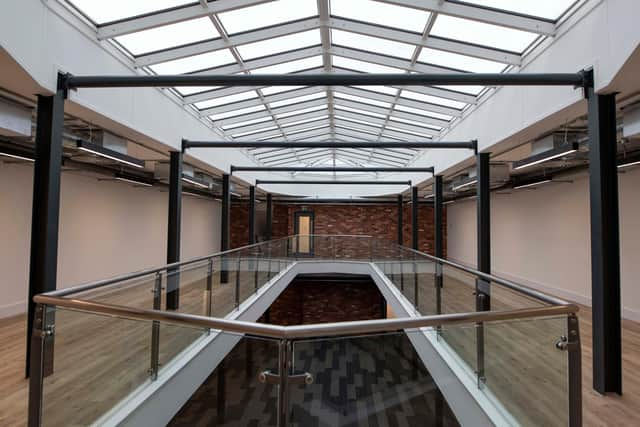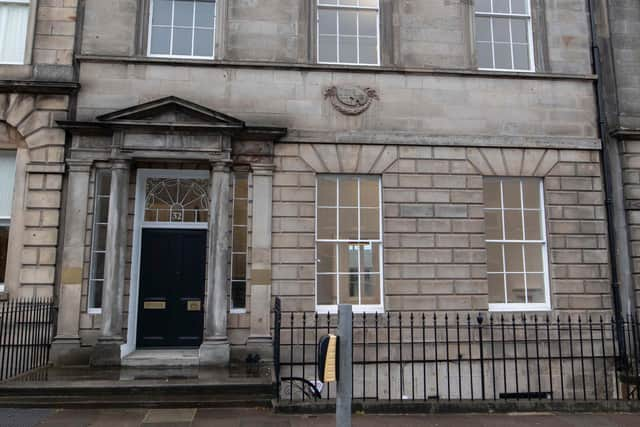The most important artist’s studio in Scotland, now available to rent


Raeburn House, the A-Listed three-storey terraced house at 32 York Place, is home to one of the most important artist's studios in Scotland, dating back to the 1790s.
Designed by renowned portrait painter Raeburn, it featured an unusually large north facing window with a chamfered lintel, which looks out over the Firth of Forth, and a system of shutters he designed himself to control the natural light while he produced masterpieces.
Advertisement
Hide AdAdvertisement
Hide AdThe same studio would inspire Peploe's White Period in the early 1900s, during which he too created some of his most celebrated works, including his women in white series of paintings.


A century on, the illustrious property with the elegant Georgian facade is ready to inspire a new occupant after being transformed into nearly 9000 sq feet of contemporary workspace as part of a £1.5 million-plus refurbishment.
On the front of the property, a carved stone plaque in the shape of an artist's palette is inscribed: "In this house, built by him, Sir Henry Raeburn painted from 1798 to 1809".
Inside, however, a modern glass-roofed extension with an open plan ground floor and first floor mezzanine links the 220 year old townhouse to a mews property at the rear. It boasts "an inspirational light, bright and unique working environment" according to Savills, who are marketing the building to prospective tenants.
Developer Keith Davidson bought the property in 2017 and completed work on it during lockdown with a view to attracting a new tenant as the office sector reawakens.


He revealed the artist's studio remains almost exactly as Raeburn and Peploe would have found it, however.
He said: "When I first saw the building I didn't fully appreciate its significance to Scottish art. It was only when I read more that I discovered its importance.
"I set about bringing it up to date with an office tenant in mind but the redesign, with a mixture of open plan and townhouse space, is sufficiently neutral that it would fit a variety of uses.
Advertisement
Hide AdAdvertisement
Hide Ad"It feels like a special place. Raeburn's studio had an enormous window renowned for its shutters, which are still there, and helped to produce a wonderful light for portraiture. It's rare for a studio to survive as it has -- it would make a phenomenal boardroom."
Sir Henry Raeburn was born in 1756 and died in 1823. He moved into 32 York Place around 1798 and specified significant changes to the architecture so that he could entertain friends and possibly prospective portrait subjects. In the studio he produced some of his most famous portraits including "Thomas Elder, Lord Provost of Edinburgh", "Sir Duncan Campbell of Barcaldine", "Francis Macnab" and "MacDonell of Glengarry".
SJ Peploe, the most successful of the four Scottish Colourist artists, worked there around a century later. He painted celebrated still lifes such as Pink Roses, which recently sold at auction for £499,000, as well as portraits of sitters including his wife Margaret Mackay as "Mrs Peploe" and professional model Peggy Macrae.